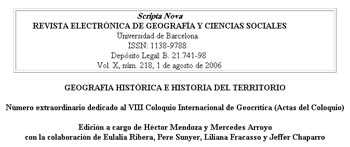Creating a region: Social struggles in Los Altos of Guatemala in the first part of the nineteenth century
Keywords:
Guatemala, Los Altos, region, indigenous peoplesAbstract
During the first half of the nineteenth century two different “models” for the political organization of the Western Highlands of Guatemala developed. One of them, barely traced out in the writings and the undertakings of the K’iche’s of Totonicapán Province, never formed part of the official nation-state of Guatemala, but nevertheless had a significant impact on the political consruction of the country. During the largest indigenous rebellion to occur during the colonial period in what is now the country of Guatemala, and during the struggles that some maceguales (indigenous “commoners”) undertook, at times violently, to wrest power from the hands of the principales (indigenous “nobles”), the Totonicapense K’iche’s left a few indications about the political model that they imagined. This model had been influenced by the liberal policies implemented by the Cadiz Courts, in particular the elimination of head taxes (tributes), the abolition of church taxes, and the suppression of caste privileges. With very different ends in mind, in the city of Quetzaltenango another model was developed that unified the creoles and Ladinos in the region. It was this second vision that, with few changes, would come to be one of the axes of the liberalism that defined the racist political economy of Guatemala during the final part of the nineteenth century and the first half of the twentieth century.Downloads
Published
2007-05-03
Issue
Section
Articles
License
Los autores que publican en esta revista están de acuerdo con los siguientes términos:
- Los autores conservan los derechos de autoría y otorgan a la revista el derecho de primera publicación, cin la obra disponible simultáneamente bajo una Licéncia de Atribución Compartir igual de Creative Commons que permite compartir la obra con terceros, siempre que estos reconozcan la autoría y la publicación inicial en esta revista.
- Los autores son libres de realizar acuerdos contractuales adicionales independientes para la distribución no exclusiva de la versió de la obra publicada en la revista (com por ejemplo la publicación en un repositorio institucional o en un libro), siempre que se reconozca la publicación inicial en esta revista.





